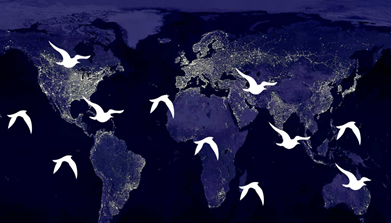Light Pollution & Migratory Birds
- 17 May 2022
Each year, World Migratory Bird Day is celebrated on two days - on the second Saturday of May and October.

- The Days are a way to reflect the cyclical nature of bird migration as well as the fact that there are varying peak migration periods in the northern and southern hemispheres.
- Activities to mark the day were held globally under the theme 'Dim the Lights for Birds at Night'.
Light Pollution
- Light pollution is increasing around the globe. More than 80 per cent of the world's population is currently estimated to live under a "lit sky".
- The amount of artificial light on the Earth's surface is increasing by at least two per cent each year and could be much greater.
Impacts of Light Pollution on Birds
- Light pollution is a significant and growing threat to wildlife, including many species of migratory birds.
- Every year, light pollution contributes to the death of millions of birds.
- It alters the natural patterns of light and dark in eco-systems.
- It can change birds' migration patterns, foraging behaviours, and vocal communication.
- Attracted by artificial light at night, particularly when there is low cloud, fog, rain or when flying at lower altitudes, migrating birds become dis-orientated and may end up circling in illuminated areas.
- Depleted energy reserves put them at risk of exhaustion, predation, and fatal collision with buildings.
Conservation Value of Darkness
- According to the Convention on the Conservation of Migratory Species of Wild Animals (CMS), "Natural darkness has a conservation value in the same way as clean water, air, and soil.
- A key goal of World Migratory Bird Day 2022 is to raise awareness of the issue of light pollution and its negative impacts on migratory birds.
About CMS
- The Convention on Migratory Species (CMS) is an environmental treaty of the United Nations and provides a global platform for the conservation and sustainable use of migratory animals and their habitats.




